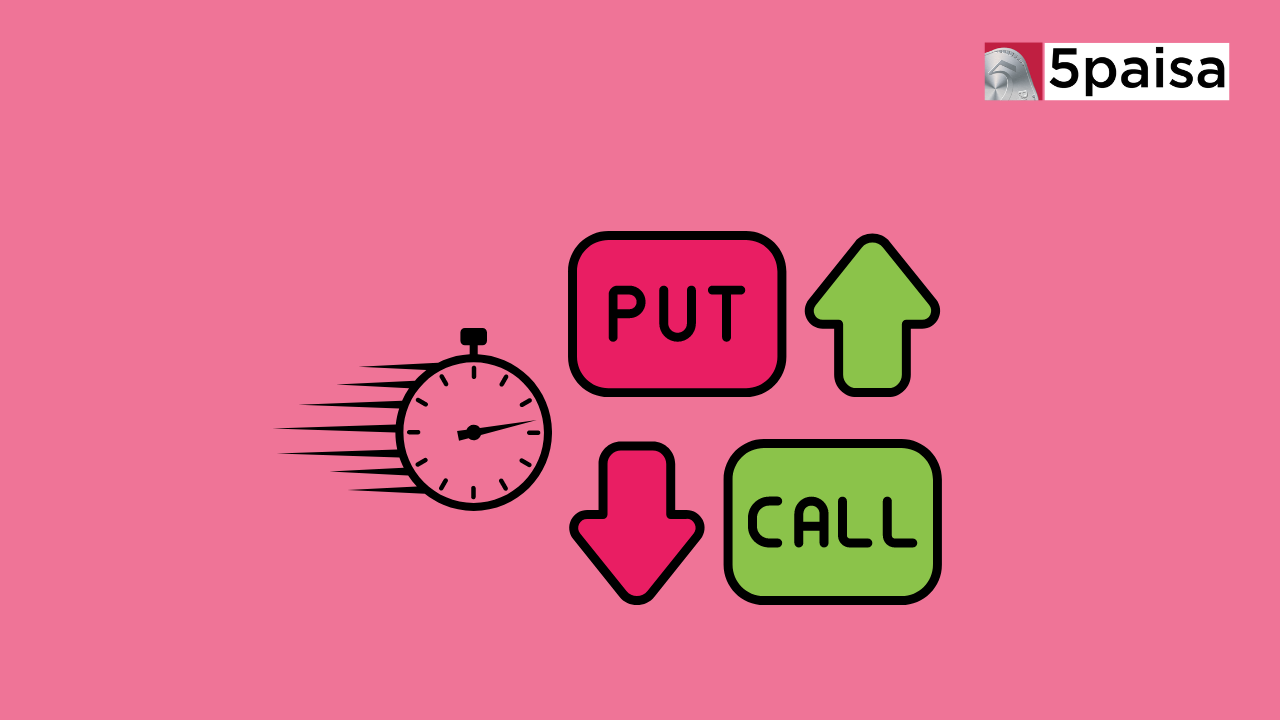Beginner’s Guide to Derivatives Trading with FnO 360
Understating Options and Its Types?

What are Options?
An Option contract is a type of derivative instrument, which gives holder the right to buy an asset but not the obligation to purchase at a fixed price (strike price) for a specific timeframe. Option trading offers an opportunity to make profit in two ways- by being an option buyer or an option writer.
An Option trader can take four views on the market:
Bullish
Bearish
Expecting a movement, in either direction
Expecting a range bound movement of index/ stock, irrespective of direction.
Options are divided in to two parts:
Call Option
Put Option

Call Option: A ‘Call Option’ gives right to holder to buy a particular asset at a specific strike price against an upfront premium paid to the seller. The buyer of a call option has bullish stance on underlying assets.
A seller of a call option has an obligation to sell an underlying asset at the strike price if exercised by the buyer of a call option. Seller of a call option receives premium for taking risk associated with that obligation. Seller of an option has bearish or neutral view on the underlying assets.
Let’s try to understand with the help of an example of a house purchase on how call option fundamentally works:
Assume Deepak is the owner of a house. He agrees with Ritesh to sell his house to him after two months at the price of Rs 10,00,000. In their agreement Ritesh has the right but not the obligation to buy the house at a predefined price after two months, in order to access his right, Ritesh must pay some token money of Rs 50,000. Deepak takes this money and keeps it and now he is obliged to keep his agreement if asked by Ritesh.

Case 1: If the market value of that house increases to Rs 12,00,000. Ritesh will exercise his right to buy Deepak’s house at predefined price of Rs 10,00,000. Ritesh’s choice was profitable because he expected that the price of the house will go up and made net profit of Rs 2,00,000.
So, Ritesh bought this right because he believed that house price will go up and Deepak sold his right because he thought that house prices will go down after two months.
Case 2: If the market value of that house falls to Rs 8,00,000, Ritesh won’t be interested in buying that house from Deepak at Rs 10,00,000, because he can buy another house from market at Rs 8,00,000. So his right will expire worthless and will have to let go the token amount of Rs 50,000 as he is not exercising his right. The advantage for Deepak will be Rs 50,000 that Ritesh paid him as token for the house.
Let’s try to replace the same concepts with real scenario
Deepak is the writer of the option and Ritesh is the buyer
Rs 50,000 that Ritesh paid to Deepak in order to have the right is the Premium
The predefined price of Rs 10,00,000 is the strike price
Two months will be the expiration date of the option
The underlying assets is house
Realignment of the aforementioned scenario in terms of Nifty:
|
Nifty Current Market Price |
9200 |
|
Buyer |
Buy call |
|
Seller |
Sell call |
|
Strike price |
9200 |
|
Expiry |
27 APRIL 2017 |
|
Underlying assets |
Nifty |
In real case scenario, buyer of a call option can square off his position and book profit anytime in the live market. Also, we have European options with pre-defined expiry date, where one can square off their position anytime before expiration. This strategy is called as Long call strategy.
Put Option: A put option is an option contract, where the holder of an option gets right but not an obligation to sell a security at specified price until its expiration. A buyer of put option has bearish view on underlying assets.
Writer/seller of a put option has an obligation to buy the underlying asset at a strike price, if exercised by buyer of a put option. Put seller receives premium for taking such risk associated with an obligation. Seller of a put option has a bullish to neutral view on underlying assets.
A simplified example
Suppose the stock of Reliance is trading at Rs 1400. A put option with a strike price of Rs 1400 with one month’s expiry is trading at Rs 15. You strongly believe that Reliance will drop sharply in coming weeks. So you bought one put option for Rs 15 covering 500 shares. When you buy put option your risk is limited to the premium paid, which comes around Rs 7,500 in this example. Put seller will receive Rs 7,500 because he is obliged to sell put option when you will exercise your right.
Case 1: As expected if Reliance falls to Rs 1350, then you will make a profit of Rs 50 per share, which comes around Rs 25,000 (50*500). Since you have paid Rs 7,500 as premium to purchase put option your net profit from entire trade will be Rs 17,500 (Rs 25000- Rs 7500).
Case 2: If stock price of Reliance surges against your expectation to Rs 1450, then your loss would be of Rs 50 per lot if you are holding futures, which comes around Rs 25,000 (50*500). Since you are the holder of the put option, you are not obligated to exercise the options, resulting in limited losses i.e. Rs 7500. This strategy is called as Long Put strategy.
To know more about How Options values are derived. Read more.
- Flat Brokerage
- P&L Table
- Option Greeks
- Payoff Charts
Trending on 5paisa
Futures and Options Related Articles
Disclaimer: Investment in securities market are subject to market risks, read all the related documents carefully before investing. For detailed disclaimer please Click here.

 Tanushree Jaiswal
Tanushree Jaiswal
 Sachin Gupta
Sachin Gupta




